
I have a medical condition that restricts my ability to work. Do I qualify for disability benefits?
Disability benefits are a form of government support for British Columbians dealing with health issues. (Here, we cover the disability benefits available.) If you’re living with a disability and are struggling to meet your daily needs, you may qualify. We walk you through your rights and the steps to apply.
Who is eligible
“Over the last year, my emphysema has been getting worse. At my last medical check up, my doctor recommended a portable oxygen device. The price tag shocked me, and I was already struggling financially. I’m considering applying for welfare benefits. From what I gather, my condition likely makes me eligible for disability assistance.”
– Billie, Campbell River, BC

Disability benefits are a form of welfare. They provide targeted help to people facing health struggles that make it very difficult for them to work or to do certain daily living activities. In BC, there are three types of disability benefits. We explain them here. They are:
Disability assistance, for those with a severe mental or physical impairment that restricts their ability to perform daily living activities.
Benefits for persons with persistent multiple barriers to employment (PPMB), for those with a medical condition that makes it difficult or impossible to look for work or keep a job.
Hardship assistance, for those in need who, for specific reasons, don’t qualify for either of the welfare benefits listed above.
To be eligible for disability benefits, you must have a designation from the Ministry of Social Development and Poverty Reduction. (In this guidance, we refer to it as the ministry.)
Disability assistance
To get disability assistance, you first need the persons with disabilities (PWD) designation. Having this designation shows you meet the law’s definition of a “person with disabilities.” To meet the definition, you must:
have a severe physical or mental impairment that is expected to continue for at least two years,
be significantly restricted in your ability to perform daily living activities, either continuously or periodically, for extended periods, and
require assistance in your daily living activities from another person, an assistance device, or an assistance animal.
Below, we walk you through the steps to apply for the PWD designation.
Benefits for persons with persistent multiple barriers to employment (PPMB)
To be eligible for PPMB benefits, you must first have the PPMB designation. Having this designation tells the ministry that you meet the law’s definition of a “person who has persistent multiple barriers to employment.” You must:
be at least 19 years old,
be receiving income assistance or hardship assistance,
have a health condition that seriously impacts your ability to look for work or keep a job, and that
has lasted for at least one year and is expected to continue for at least another two years, or
has occurred frequently in the past year and is likely to continue for at least two more years.
In addition, you must be facing at least one other barrier that makes it difficult for you to look for work or keep a job. Examples of other barriers include:
being a victim of domestic violence
experiencing homelessness
needing English language training
having a criminal record
To apply for the PPMB designation, go to a ministry office in person or call them at 1-866-866-0800. You can also submit your application online, through My Self Serve.
Apply for the PPMB designation
To apply for the PPMB designation, go to a ministry office in person or call them at 1-866-866-0800. You can also submit your application online, through My Self Serve.
To be eligible for welfare, you must meet certain financial criteria.
You can own some assets and still qualify for disability benefits
To qualify for disability benefits, the value of your assets must be below a certain amount. This amount is called your asset limit. An asset includes:
equity in any personal or real property that can be converted to cash
a beneficial interest in personal or real property held in trust
cash
Asset limits vary depending on the size of your family unit. Your family unit includes you and your dependents. A spouse (married or unmarried) who lives with you is a dependent. So is a minor child who lives with you more than half the time and relies on you for necessities, like food and shelter.
Who is considered a spouse
Under BC’s welfare laws, a spouse is someone:
you’re married to, or
have declared you’re in a marriage-like relationship with, or
have lived with for at least one year in a marriage-like relationship.
Indicators of a marriage-like relationship include sharing finances and presenting as a couple to friends and family. See this guidance from the province for details.
When the ministry looks at your assets, some of them don’t get counted towards your asset limit. The law calls these exempt assets. Examples include clothing, a vehicle, your family unit’s home, and some assets held in trust. Assets that do get counted towards your asset total are called non-exempt assets. The ministry’s website has the full list of exempt and non-exempt assets.
The asset limit varies with the type of benefit and your family situation
The law sets out asset limits for those applying for disability assistance. As an example, a family unit where one person has the PWD designation can own $100,000 worth of non-exempt assets and still qualify for disability benefits.
Importantly, if you intend to apply for the PWD designation you may qualify for income assistance even if your assets exceed the asset limit for income assistance. You can request a temporary exemption of your assets up to the PWD asset limit while you apply for PWD.
A different law sets out asset limits for those applying for PPMB benefits. Note that PPMB benefits and income assistance have the same asset limits. For example, a single person can have up to $5,000 worth of assets and still qualify for PPMB benefits.
You can get some income and money from other sources and still qualify for disability benefits.
When you apply for disability benefits, the ministry adds up the money you get from different sources to come up with your net income. To qualify, your net income must be below your income limit, which is the amount you’d receive on disability benefits.
Income is classified as exempt or non-exempt
Some types of income don’t get counted towards your net income. This is called exempt income. The law lists the types of exempt income for disability assistance. Examples include child disability benefits, gifts and inheritances, and disbursements from an RDSP.
A different law lists the types of exempt income for PPMB benefits. Note that the list of exempt income for PPMB benefits and income assistance is the same.
Income that does count towards your total net income is called non-exempt income. Examples of non-exempt income include CPP benefits, regular EI and EI sickness benefits, and spousal support payments.
See the ministry’s website for the full list of exempt and non-exempt income.
If you have non-exempt income
If you have non-exempt income that’s less than the amount of disability benefits your family unit would get, the ministry will pay you enough to make up the difference.
For example, say you are age 65 or older and have the PWD designation. You live with your spouse, who doesn’t have the PWD designation and is also over age 65. You have no dependent children, your rent is $700 per month, and you receive the PWD bus pass. You determine that your family unit would get $2,323.50 per month ($1,628.50 support allowance plus $695 shelter allowance) in disability assistance. Your family unit takes in $1,050 per month from CPP benefits, a non-exempt source. In this case, if you qualify, the ministry would pay you $1,273.50 in disability assistance for the first month. That is, unless you’re entitled to an earnings exemption.
You may get an earnings exemption
You can also earn some income from work while receiving disability benefits without having it deducted (taken) from your payments. This is called an earnings exemption.
Applicants for disability assistance are eligible for an earnings exemption if their family unit includes:
a person with the PWD designation who previously received disability assistance, or
a person who received income assistance or disability assistance in one of the last six months.
Usually, you become eligible for an earnings exemption after receiving benefits for one month. But if someone in your family unit received income assistance or disability assistance in one of the last six months, the earnings exemption will take effect right away. Similarly, if you have the PWD designation and have received disability assistance in the past, you’ll have no wait period.
The amount of your earnings exemption depends on the type of benefits you get. As of October 2025, a single person who has the PWD designation is entitled to an annual earnings exemption of $16,200. A single person who has the PPMB designation is entitled to a monthly earning exemption of $1,080.
For current earnings exemption amounts, see the ministry’s website.
To qualify for disability benefits, you must meet immigration requirements.
To be eligible, at least one member of your family unit must be one of the following:
a Canadian citizen,
a permanent resident (with landed status),
a Convention refugee,
in Canada under a temporary residence permit,
in the process of having a claim or application for refugee protection decided,
subject to a removal order that cannot be executed, or
in Canada under a temporary resident visa issued for humanitarian reasons related to armed conflict.
An exception to the immigration requirements
The law carves out an exception to the above requirements for single parents without legal status in Canada who are separated from an abusive spouse. To qualify for the exemption, the welfare applicant must:
have one or more children who are Canadian citizens
be separated from an abusive spouse
have applied for permanent residence status in Canada
be unable to leave BC for specific reasons
For the full details, see the ministry’s website.
If your sponsorship breaks down
If your spouse sponsored you to come to Canada and your sponsorship breaks down due to abuse, you may be able to skip some of the usual steps when applying for welfare. See our guidance on sponsorship breakdown.
Generally, you must be 19 or older to qualify for disability benefits. However, if you’re under age 19, you may qualify in these circumstances.
If you don’t live with your parents. To be eligible for welfare, the ministry must be convinced that your parents won’t support you. The ministry will make reasonable efforts to get your parents to take responsibility for your financial support before giving you benefits.
If you live with your parents. If your parents receive welfare benefits and you have a dependent child of your own, the ministry may see you as a separate family unit from your parents. This means you can apply for welfare as your own family unit and receive benefits separate from your parents.
If you’re likely to receive the PWD designation. If you’re age 17 and likely to receive the PWD designation on your 18th birthday, you can apply for disability assistance up to six months prior to turning 18. If your application is accepted, you’d start getting disability assistance as soon as you turn 18.
What you should know
In applying for disability benefits, you have rights. These include the right to:
apply for and get the benefits you qualify for
fair, efficient, and respectful service from ministry staff
get extra help from ministry workers if you need it for health or other reasons
have your privacy and personal information protected by the ministry
have someone with you when you talk to a ministry worker (for example, an advocate, friend, or family member)
ask for an interpreter if English isn’t your first language
appeal or challenge most ministry decisions that go against you
It’s not your fault that you’re struggling to meet your needs. You have the right to ask for help — it’s not something to feel ashamed of.
When you first contact the ministry to apply for welfare, they will do an immediate needs assessment. The purpose of the assessment is to find out if you have an immediate need for food, shelter, or urgent medical attention. You have the right to get support right away if you need it.
Circumstances that show an immediate need include:
relying on community resources (like a food bank) for basic food needs
having received an eviction notice
having had your utilities disconnected, or facing a disconnection
staying at an emergency shelter with no suitable accommodation to move into in the near future
being unable to pay for prescription medication you need right away
If the ministry agrees you have an immediate need, they will ensure you get help as soon as possible. They can also speed up the welfare application process, and relax some of the eligibility requirements for you.
If you are fleeing abuse
When you apply for welfare, let the ministry know right away if you’re fleeing abuse. Ministry staff should ensure that the immediate safety needs of you and your children are met. They can also speed up the application process, to ensure that you don’t stay in an abusive situation due to financial need.
Sometimes, dealing with the ministry can be hard. Here are a few tips when dealing with ministry staff:
If you need help understanding something, talk to an advocate or reach out to a friend. An advocate is a community worker trained to help people. It can help to have someone else to talk to the ministry on your behalf. To find an advocate in your area, see below under who can help.
Call the ministry back if you don’t hear from them when you’re supposed to. We tell you the deadlines in the steps below.
Keep notes of what you do, including the date and time. When you contact the ministry, ask for the name of the person you speak to and write it down.
Ministry staff must follow BC’s welfare laws. You can access the laws that deal with disability assistance here and here. The laws dealing with PPMB benefits are accessible here and here. There are also policies and procedures ministry staff must follow. You can access them here. Consider contacting an advocate if you need help understanding what the laws or policies mean.
Be persistent. Remember: you have the right to get help.
Apply for disability assistance
In order to receive disability assistance, you must have the persons with disabilities (PWD) designation from the ministry. Having this designation tells the ministry that you’ve met the eligibility requirements for disability assistance, as long as you also meet requirements around income and assets.
To get the PWD designation application form, you have to apply for regular welfare, called income assistance. Here, we walk you through the steps to apply. If you’re applying online, the questionnaire will ask you if you’d like to apply for the PWD designation. Make sure you select “yes.” If you’re applying in person or over the phone, tell the ministry worker you’d like to apply for the PWD designation.
Disability benefits help sheets
Disability Alliance BC is an organization dedicated to supporting people with disabilities. They publish a series of disability benefits help sheets, including one on income assistance applications for people with disabilities.
You may be exempt from the orientation and job search requirements
Most applicants for welfare must complete an orientation and a job search as part of the application process. (See steps 3 and 4 in applying for welfare.) However, some applicants are exempt from these requirements. This includes people who have a mental or physical condition that prevents them from working or attending an orientation. If this applies to you, let the ministry know and you may be excused from the orientation and job search. They may ask you to get a note from a doctor explaining your condition.
A simplified application process
Those who are already enrolled in certain programs can access a simplified PWD application process. You may be able to use it if you’re registered with any of these programs:
Make sure to tell the ministry if you’re enrolled in one of these programs.
If you already receive income assistance
If you’re on income assistance and want to apply for disability assistance, contact the ministry and let them know. Ask for a PWD application. You can reach the ministry at 1-866-866-0800.
When you apply for welfare, you have to do an eligibility interview. (See step 5 in applying for welfare.) During the interview, a ministry worker will ask you questions about your situation. They’ll use the information you provide to decide if you qualify for income assistance and the likelihood that you’ll qualify for the PWD designation.
After your interview, the ministry worker will give you a PWD application form if:
you meet the asset rules for disability assistance (see above, under who is eligible),
your non-exempt income is less than the disability assistance rate your family unit would get if you qualified (again, see above), and
you meet the other rules to qualify for welfare.
Sometimes, you will be financially eligible for PWD assistance but not for income assistance. If you receive a PWD application but are not receiving income assistance, the ministry will generally give you two months to complete and submit it. If you need more than two months, let them know that you need more time so they don’t close your file. If the ministry closes your file, you may have to start the application process over from the beginning.
If the ministry decides you aren’t eligible
If the ministry worker says you don’t qualify for income assistance or the PWD designation, it’s important to understand why. They should provide you with a written decision so you can decide what to do next. If you disagree with their decision, you can ask for a reconsideration (see step 7, below).
The PWD application has three sections:
Section one is the section you fill out.
Section two is the section a doctor or nurse practitioner fills out.
Section three is the section your assessor fills out. The assessor must be a specific registered professional. Ideally, one who is familiar with your situation. The PWD application includes a list of people who can act as your assessor.
Filling out section one
First off, it’s okay to ask for help filling out your application if you need it. Consider asking a friend, family member or advocate to go through it with you. (See below, under who can help, for guidance on finding an advocate.)
Start by completing the personal information part in section one. You can attach extra pages or you can write directly in the application booklet.
Next, turn to the part about your disabling condition. What you write here is very important. Your doctor or nurse practitioner and your assessor can use the information you provide to guide them in completing sections two and three. This can be especially helpful if you are working with a health professional who doesn't know you well. So make sure you include as much information as you can about your disability. If you aren’t sure what to write, it’s a good idea to speak to an advocate.
Once you’ve completed section one, sign and date the form. If you aren’t able to do so, a guardian or someone with legal authority can sign it on your behalf.
Guidance on filling out your application
Disability Alliance BC publishes an in-depth guide on applying for the PWD designation. It walks you through how to fill out section one of the form. It also includes a checklist to help you explain how your disability impacts your life.
Section two of the PWD application form is for a doctor or nurse practitioner to complete. Before they fill it out, it’s a good idea to meet with them. Their ability to answer the questions depends on how well they know you and the details of your situation.
Schedule an appointment with your doctor or nurse practitioner for you to go through the form with them. Discuss each question from section two. Give them the information they’ll need to provide accurate answers.
If you use a walk-in clinic
For those without a doctor or nurse practitioner, walk-in clinics are an option for medical help. If you go to a walk-in clinic, you can ask the doctor who sees you to fill out section two and three of your PWD form. It can be helpful to review the questions together beforehand. As walk-in clinics often don’t know your full health history, the doctor may not know you well enough to fill out the form without your help. Some clinics may request that you attend their clinic a few times before they will complete your application. Bring any health records you have available to you to your appointments.
Section three of the PWD application form is for your assessor to fill out. Your assessor can be a doctor, nurse practitioner, or another registered professional, like a physical therapist or social worker. The types of people who can act as your assessor are listed in your PWD application form.
Schedule an appointment with your assessor. Go through the form with them and discuss the questions in section three. Provide any information they need to give complete and accurate answers. If the same doctor is also your assessor, they can complete sections two and three at the same time.
Once all three sections of your PWD application are filled out, take a look at the checklist towards the end of the form. Make sure you’ve covered everything. Make a photocopy of the completed application for your records.
To submit your application, drop it off to your local ministry office or mail it in the envelope included with the form. No postage is required.
If the ministry denies your application for the PWD designation, you have the right to challenge it. The first step in the process is a request for reconsideration. This is a chance for a new person at the ministry to take a second look at your application. They’ll also consider any new material (called “evidence”) you’ve submitted since the original decision was made.
Find an advocate
Advocates are community workers trained to help people. An advocate can tell you if your reconsideration or appeal is likely to succeed. They can also help you with the paperwork involved. To find an advocate, see below under who can help.
How to request a reconsideration
First, call the ministry at 1-866-866-0800 or visit your local ministry office to tell them you want a decision reconsidered. They should give you a request for reconsideration form within 48 hours. If you haven’t received the form within a week of your request, follow up with them. (Note that it’s generally best to pick up your reconsideration package in person to prevent delays.)
Fill out sections three and four of the form, then return the form to your local office. Alternatively, you can fill out and submit a request for reconsideration form online through My Self Serve.
To ensure the ministry has all the information you want them to consider for your reconsideration, submit the completed form together with any new evidence you might want to provide. New evidence can include an updated personal statement, letters from doctors or assessors, statements from others, or tests and medical records.
Make sure to meet the deadlines
You must return the form within 20 business days of the ministry’s original decision. The 20 business day countdown starts the day after you learn of the decision. If your denial decision is dated but you did not read or receive the decision until days later, the 20 day deadline should start the day after you actually learned of the decision. If there was a delay between when your decision is dated and when you found out about the decision, it’s important to tell the ministry this when you call to request the reconsideration package. They should amend the dates accordingly.
If you aren’t able to meet the 20 day deadline, you can request an extension of up to an additional 20 business days. The countdown for the extension deadline starts the day after you request the extension. To maximize your time, make sure you request your extension as close to the original deadline as possible. If you request your extension too early, it can eat into your original timeline and will not provide you any additional time.
What happens next
A reconsideration officer will review your form and get back to you with a decision by mail or through your My Self Serve account. Follow up with the ministry if you have not received a decision on your reconsideration after a week. For in-depth guidance on submitting a request for reconsideration, see this help sheet.
If you aren’t satisfied with the reconsideration decision, you can appeal. Welfare appeals are heard by the Employment and Assistance Appeal Tribunal. For the steps to ask for an appeal tribunal hearing, see this help sheet.
Who can help

The Ministry of Social Development and Poverty Reduction
Government office that administers BC’s welfare program.
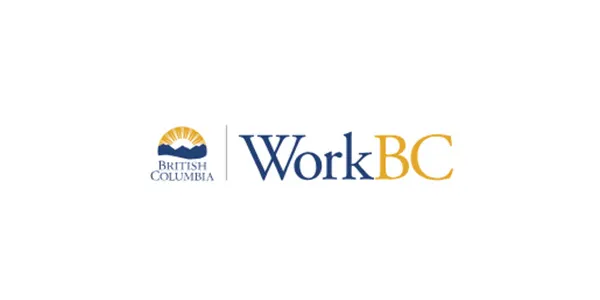
WorkBC
Government agency offering employment services to British Columbians.
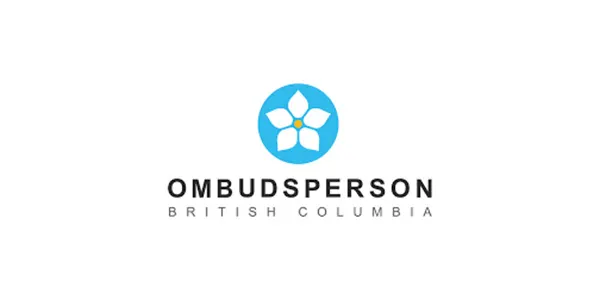
BC Ombudsperson
Independent office that hears complaints about government services or agencies.
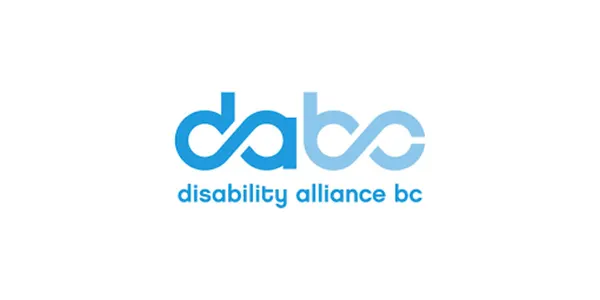
Disability Alliance BC
An organization offering help sheets and tools to those on disability benefits or intending to apply.

PovNet
Legal advocates provide free legal information and help to low-income people in the community, under the supervision of a lawyer.
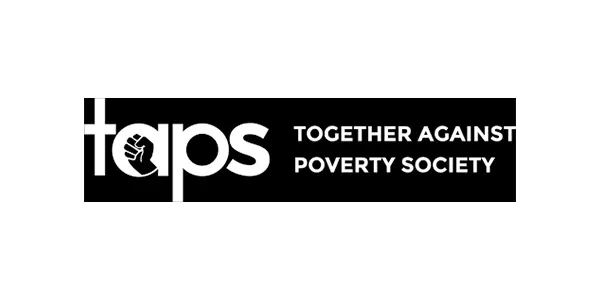
Together Against Poverty Society
Helps people in the Greater Victoria area with PWD applications and challenging ministry decisions.
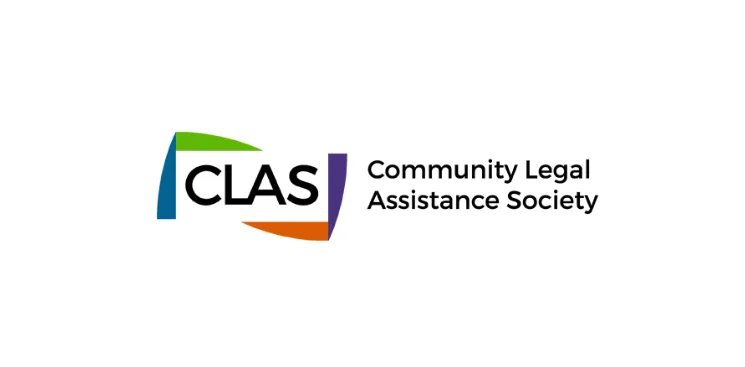
Community Legal Assistance Society
Assists low-income British Columbians who need help with a decision from the Employment and Assistance Appeal Tribunal.

UBC Law School's Student Advice Program
Law students provide help to people with limited means in the Vancouver area.

University of Victoria Law Centre
Law students provide help to people with limited means in the Victoria area.

Thompson Rivers University Community Legal Clinic
Law students provide help to people with limited means in the BC Interior.


